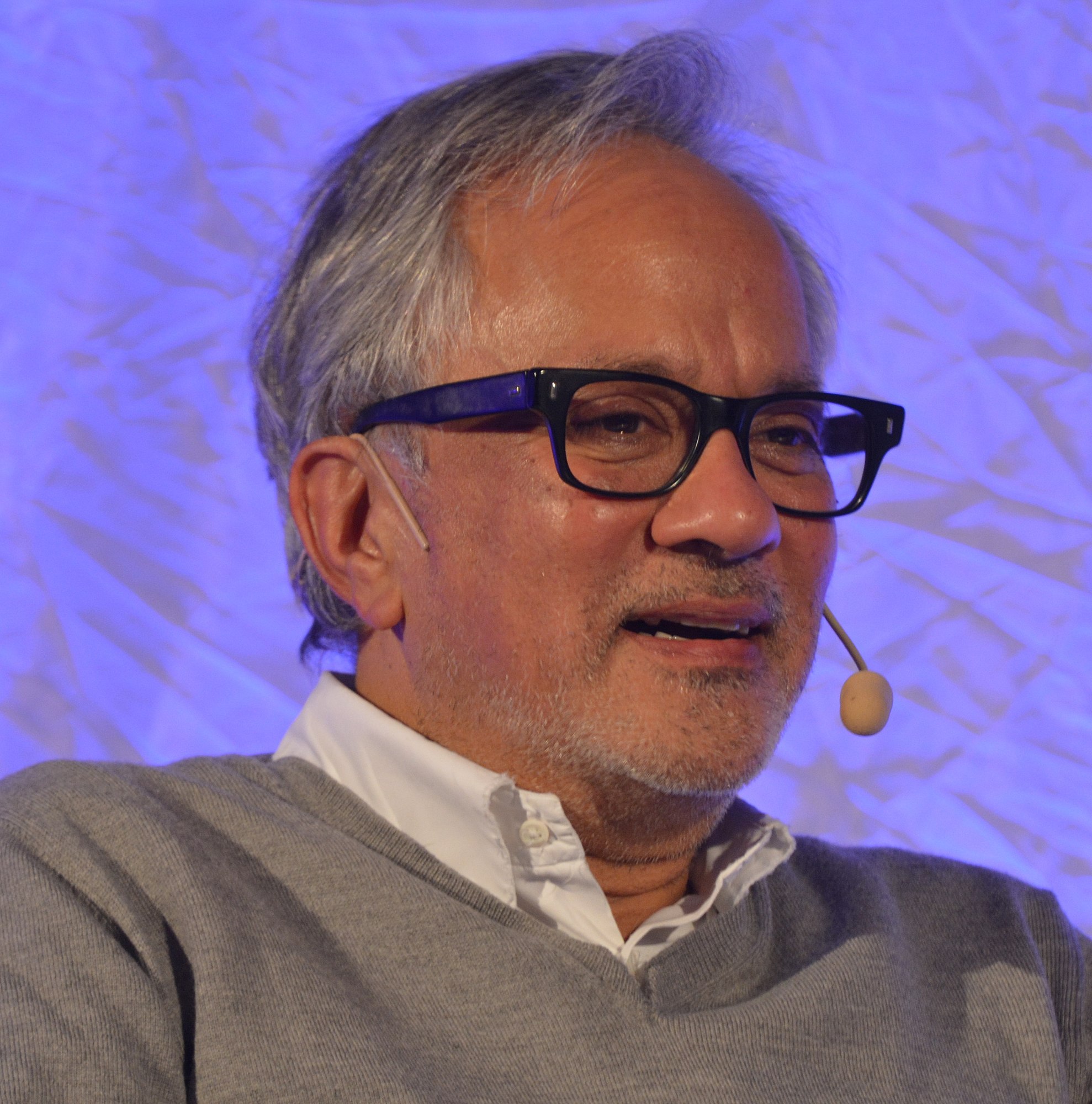More about Anish Kapoor
Works by Anish Kapoor

Contributor
Anish Kapoor is a self-identified “difficult bugger” and needless to say, his work tends to live up to that reputation.
Kapoor has ascended to the acme of superstar artist over the span of a lengthy and prosperous career. In fact, Kapoor received the Turner Prize in 1991 and was even knighted in 2013! This Indian-born, London-native was not always a hotshot urbanite though, in fact he spent a period of his life getting back to his roots and living on a kibbutz in Israel.
Over the span of Kapoor’s industrious career, he has explored many topics ranging from the spiritual to the grotesque, but he consistently seems to exhibit an odd obsession with the interior of both objects and people, which he attributes to being in psychotherapy for over twenty years. Surely this and his vaginal works would have made Freud proud.
That said, his work can be a bit racy. His exhibitions are often accompanied by warnings at the front door proclaiming that the work might not be suitable for young impressionable audiences, which is understandable since a sizable portion of Kapoor’s repertoire consists of bloody, fleshy representations that would not be ideal for the faint of heart.
Kapoor has also managed to nab himself some haters in a very interesting way. While the art world is rife with disputes, this one in particular exemplifies just how contentious and spiteful the our illustrious creators can be. A new pigment called Vantablack has recently been developed that is the blackest material in the universe, besides a black hole. Kapoor felt such a kinship with the color that he purchased the exclusive rights to the pigment, meaning no other artists are capable of using it. Many artists now hold a serious gripe with him for they feel it is completely ridiculous and in turn, one artist took the matter into his own hands. Stuart Semple developed the world’s pinkest pink pigment and offers it to all artists except for Kapoor, who is legally banned from using it. In fact, when one purchases this pigment, they must sign a legal agreement saying they are not Anish Kapoor or working with Kapoor. Ultimately though, Kapoor still got his hands on the pigment and posted a picture of his middle finger dipped in it and is flipping the bird to the camera. Can you say petty?
This is not the only dispute the Kapoor found himself in recently. A sculpture by Kapoor can be found in the Garden of Versailles and has created so much controversy that it has been dubbed the distasteful name of “The Queen’s Vagina.” The public seems to think that Kapoor is a dirty perv due to his sculpture that is may or may not look slightly like a vagina. Because artists have never depicted vaginas in art before…
Sources
- Telegraph, http://www.telegraph.co.uk/culture/art/art-features/9587333/Anish-Kapoo…
- Tate, http://www.tate.org.uk/whats-on/tate-britain/exhibition/turner-prize-19…
- Times of India, http://timesofindia.indiatimes.com/nri/other-news/UK-queen-knights-Anis…
- Telegraph, http://www.telegraph.co.uk/culture/art/art-features/9587333/Anish-Kapoo…
- The Guardian, https://www.theguardian.com/artanddesign/2015/jun/07/anish-kapoor-sculp…
- The Guardian, https://www.theguardian.com/artanddesign/2016/sep/26/anish-kapoor-vanta…
Featured Content
Here is what Wikipedia says about Anish Kapoor
Sir Anish Mikhail Kapoor, CBE, RA (born 12 March 1954) is a British-Indian sculptor specializing in installation art and conceptual art. Born in Mumbai, Kapoor attended the elite all-boys Indian boarding school The Doon School, before moving to the United Kingdom to begin his art training at Hornsey College of Art and, later, Chelsea School of Art and Design.
His notable public sculptures include Cloud Gate (2006, also known as "The Bean") in Chicago's Millennium Park; Sky Mirror, exhibited at the Rockefeller Center in New York City in 2006 and Kensington Gardens in London in 2010; Temenos, at Middlehaven, Middlesbrough; Leviathan, at the Grand Palais in Paris in 2011; and ArcelorMittal Orbit, commissioned as a permanent artwork for London's Olympic Park and completed in 2012. In 2017, Kapoor designed the statuette for the 2018 Brit Awards.
An image of Kapoor features in the British cultural icons section of the newly designed British passport in 2015. In 2016, he was announced as a recipient of the LennonOno Grant for Peace.
Kapoor has received several distinctions and prizes, such as the Premio Duemila Prize at the 44th Venice Biennale in 1990, the Turner Prize in 1991, the Unilever Commission for the Turbine Hall at Tate Modern, the Padma Bhushan by the Indian government in 2012, a knighthood in the 2013 Birthday Honours for services to visual arts, an honorary doctorate degree from the University of Oxford in 2014. and the 2017 Genesis Prize for "being one of the most influential and innovative artists of his generation and for his many years of advocacy for refugees and displaced people".
Check out the full Wikipedia article about Anish Kapoor











